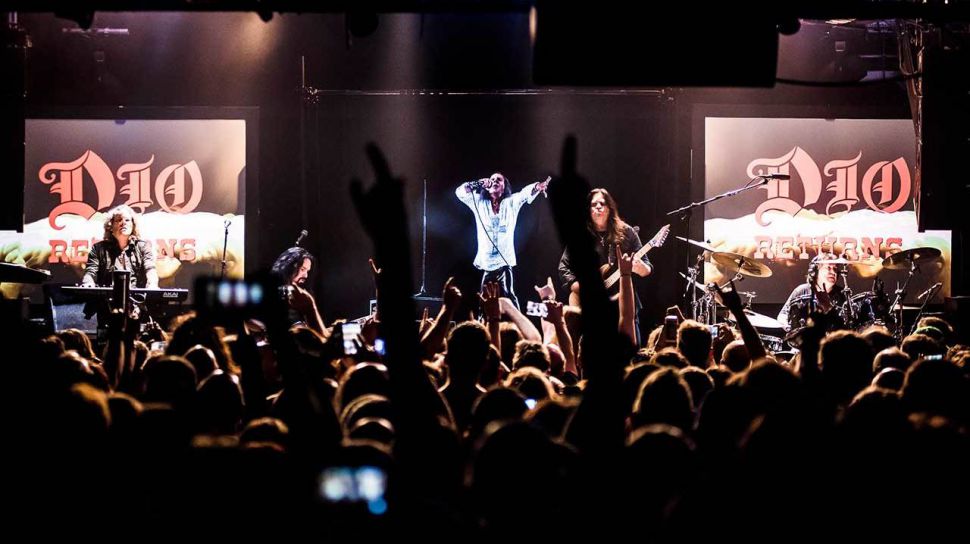
Ten years from today, who will be playing your dream rock festival bill? David Bowie and Prince headlining? A young Kurt Cobain in full-throated roar? Led Zeppelin at their world-shaking peak? Queen led by Freddie Mercury in his imperial pomp? How about Janis Joplin duetting with Jim Morrison? Lemmy reunited with his old pal Jimi Hendrix? Or Elvis Presley fronting an all-star supergroup featuring John Lennon, Lou Reed and Sid Vicious?
This Night of the Living Dead fantasy is not some macabre future episode of Black Mirror. Thanks to advances in hologram technology, all of the posthumous, music concert holograms, comebacks listed above are not just possible but increasingly likely. Digital 3D doppelgangers have been creeping into concert halls for more than a decade now. Holographic simulations of Madonna and Gorillaz performed together at the Grammy awards in 2006. A hologram of rapper Tupac Shakur grabbed global headlines with his Coachella Festival appearance in 2012. A computer regenerated Michael Jackson moonwalked onstage at the 2014 Grammys. Many more are in gestation, from Abba to Zappa, Roy Orbison to Lemmy.
But way out in front of this technological revolution is the late Ronnie James Dio. A holographic replicant of the legendary frontman, who died in 2010, made a sensational live debut in front of 70,000 surprised fans at Wacken Open Air festival in 2016. A European tour followed late last year under the name Dio Returns, featuring Dio’s long-serving band alongside guest singers Oni Logan and Tim “Ripper” Owens, breaking new ground as the first ever live hologram rock show to go on the road. A more extensive world tour is planned for later this year.
Fan reaction to the Dio hologram has inevitably been mixed, but Dio’s widow Wendy insists the new show is true to her late husband’s spirit. “We need to keep Ronnie’s music alive,” she argues. “Ronnie tried desperately to make a hologram way back in 1986. Anyone who saw that Sacred Heart tour saw the crystal ball with Ronnie’s head in there, which was done with rear projection, but he was trying to make a hologram. He was always very enthralled by Disneyland and the holograms there. So I think he would give this his blessing.”
To be accurate, neither Dio Returns nor any of the other recent holographic pop resurrections have been true 3D holograms. All use variations on a surprisingly antique stage effect known as “Pepper’s Ghost”, an optical illusion created by reflecting a 2D image onto an angled screen. This visual magic trick was first perfected in 1862 by scientist John Henry Pepper for a stage production of the Charles Dickens spine-chillier The Haunted Man. “It’s an old concept that’s been tweaked and tweaked,” nods Eyellusion CEO Jeff Pezzuti. “And we are going to tweak some more, we’re not going to stay still.” But this is a boon to the music concert holograms idea.
Where Dio are breaking new ground, others will soon follow. Live holograms of pop diva Whitney Houston and rapper Notorious BIG are reportedly in development. In April, meanwhile, veteran Manchester-based concert promoter Danny Betesh will bring a holographic version of Roy Orbison to the UK for an extensive arena tour backed by a full orchestra. Betesh, fresh from seeing the first pre-tour showcase in New York, believes this technology will prove a boon to old-time artists and their fans.
Betesh suggests that holographic shows will fully never replace live human performers, but could still grab major market share as an alternative option. And of course, as this technology evolves, there is no reason why it should remain limited to resurrecting dead artists alone. Where demand remains high but veteran performers can no longer face the stress of touring, holograms could fill a gap in the market as the ultimate tribute act. Indeed, TV talent-show tycoon Simon Cowell is currently developing 3D “digital avatars” of the very-much-alive Swedish pop titans ABBA for a world tour next year, backed by a full live band.
In a quick straw poll of the Dio band for fantasy future music concert holograms, candidates are David Bowie, Freddie Mercury, Jimi Hendrix, Jim Morrison and Jon Lord inevitably lead the pack. Once this technology takes off, of course, all of these and more will be possible. Imagine the ultimate classic rock supergroup jamming together, forever.
From classical maestros to classic rock legends, don’t fear the digital reaper. Death is no longer an obstacle to a healthy touring career. For those about to virtually rock, we salute you.
Edited from an article: By Stephen Dalton February 01, 2018 Features
Recent Comments